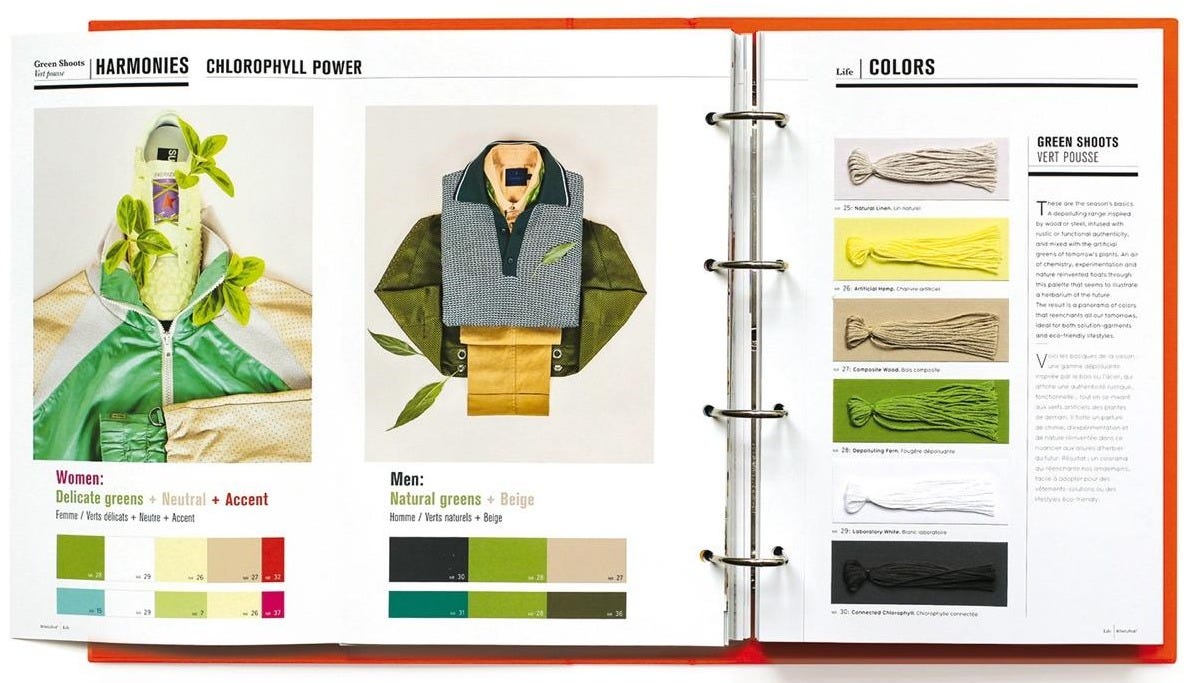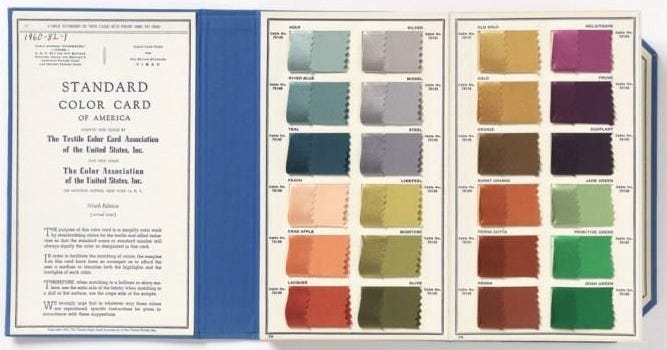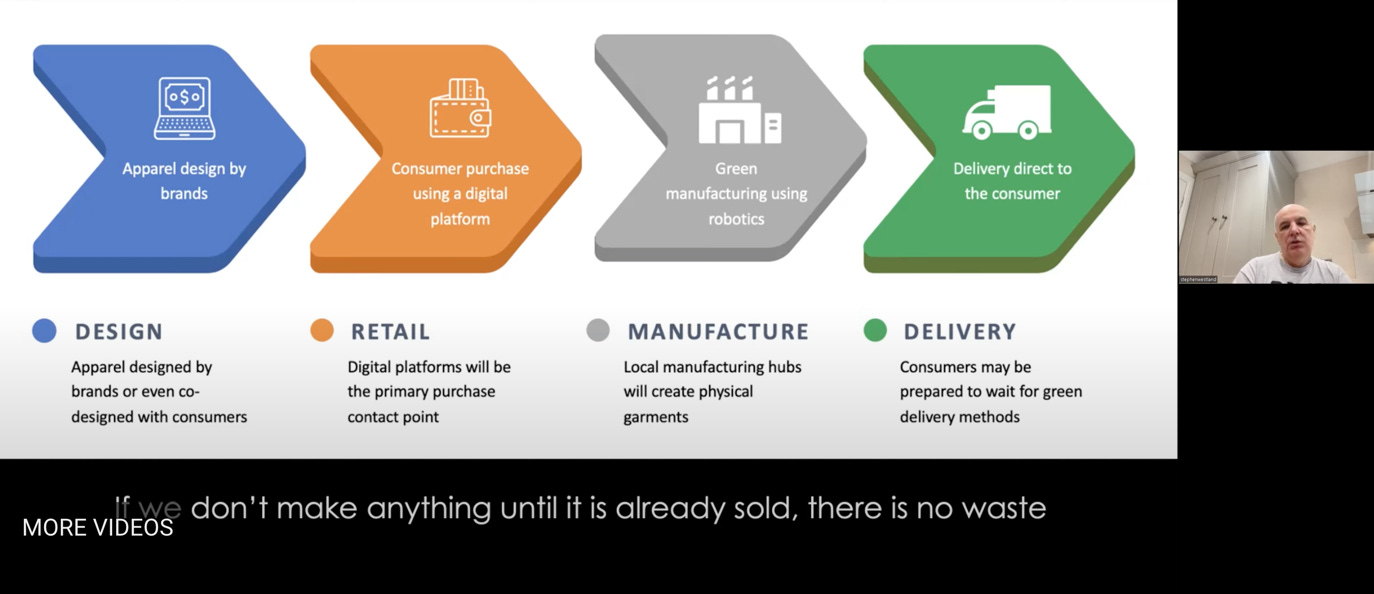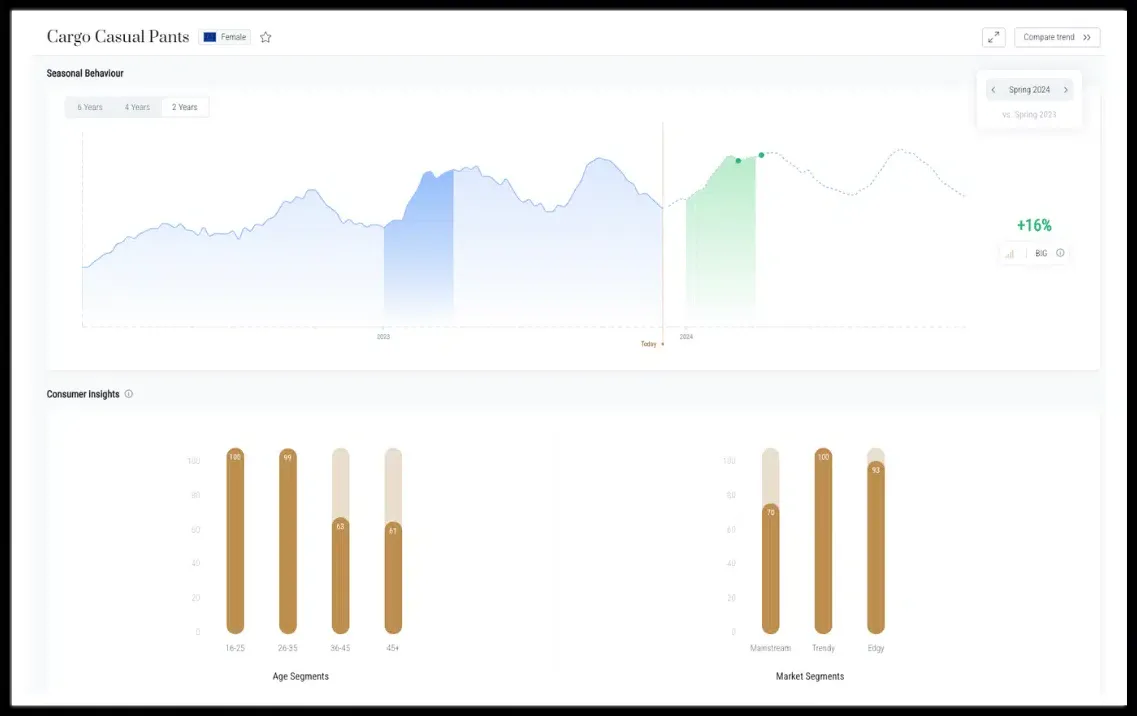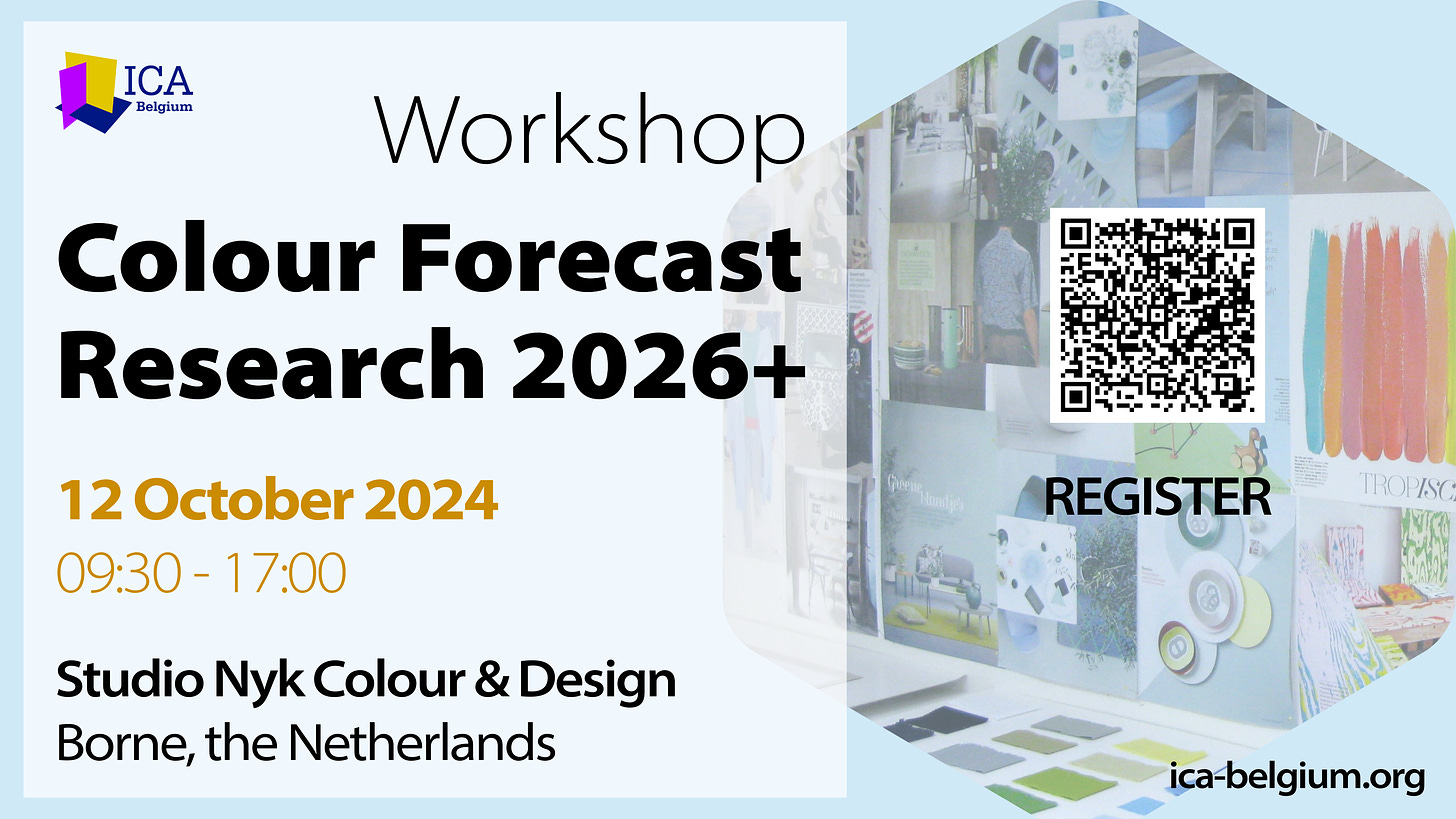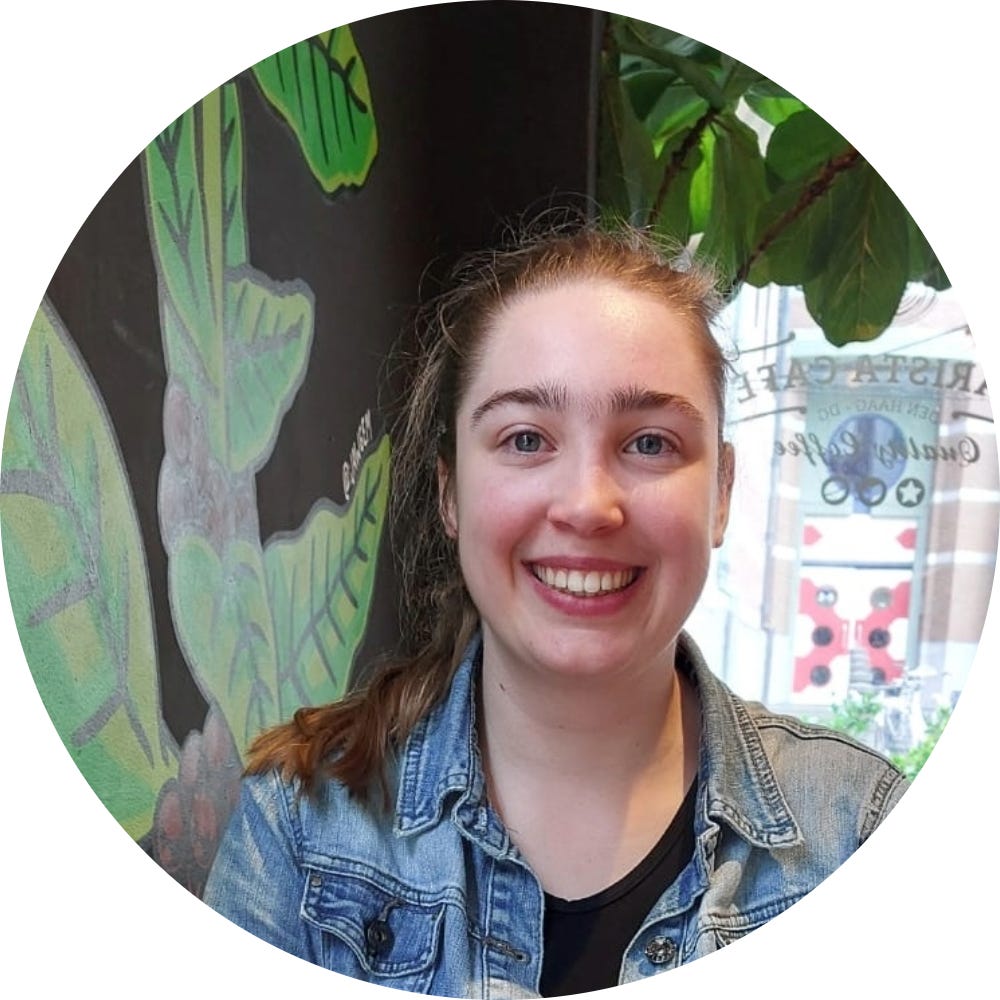Colour trend forecasting has been important for a long time. How did colour trend forecasting develop throughout history? And what will the role of colour trend forecasting be in the future? This article will zoom into the history of colour trend forecasting and how it developed over time. As a bonus, we will have a look at the future by focusing on the role of Artificial Intelligence in colour trend forecasting.
First things first: What is a Colour Trend Forecast?
Color Marketing Group describes colour forecasting as "the practice of predicting the colors and color stories that consumers will want to purchase in the near future" (Color Marketing Group).
What does this mean? Colour and Trend Forecasting is about collecting information by researching colours and trends. Based on the gathered information, future colours and trends are analysed. In doing so, the future trends of the near future can be created. Crucial here is that the outcome of the analysis will resonate with consumers, so understanding consumer behaviour is essential for (fashion) companies. Important factors that determine trends include art, societal factors, psychology, science, and technology. There are many players in the industry for whom it is important to know what the trends will be, so that the new products they develop will meet consumer requirements. A few examples of industries here are fashion, automotive, interior design, and hospitality. Colour and trend forecasting processes need time. In general, for fashion, it takes 18 months from beginning to end (from colour forecasting to producing the product). In some industries, like the automotive industry, the colour and trend forecasting processes need longer. Usually, colour trends are predicted a couple of years ahead.
The journey (1800 until now)
Fashion colour trends date back to the 1800s when French textile mills created fold-out books with swatch colour cards. These cards became an essential tool for the textile industry and later became a popular method in North America.
Trend forecasting as a practice has existed for just over a century. Originating in the U.S. and France, the industry began with people tracking and forecasting colours and materials. The first colour forecasts were created in 1915 to help the industry focus on what was likely to appeal to users, thus limiting markdowns and waste in the industry. These first forecasts, however, essentially dictated what colours and textiles were produced, which gave users limited choices. Margaret Hayden Rorke was America's first professional colour forecaster. She was Head of The Textile Color Card Association (1915-1955) for almost forty years.
In the 1960s and 1970s, the focus of trend forecasts shifted from narrow to broadened trend reports to inspire new directions and design ideas for products in the fields of fashion, (interior) design, cosmetics, etc. Forecasters who rose to importance include Li Edelkoort and Nelly Rodi. For example, in 1985 Nelly Rodi successfully founded her own trend agency. The company’s mission was forecasting fashion and lifestyle trends two to three years in advance. She innovated with an original working method built on crossing design, marketing and consumer attitudes. In addition, she expanded her fashion trend detection techniques to include individual lifestyles (beauty, home decor, design, food, and lifestyle) to help brands understand the times and create their futures.
In 1986, Pantone established its Colour InstituteTM and became a leader in colour and trend forecasting, and the go-to for designers and brands. Later in 1988, they set new colour standards for textile, design, and home industries. Pantone is mainly used as a colour communication system.
In 1998, the online service called the Worth Global Style Network (WGSN) broadened the scope of the industry again. Today, the expanded forecast company includes multiple lifestyle categories and more user-centred trends that examine the culture of entertainment, food technology, and product design.
Colour Trend Forecasting with Artificial Intelligence
Someone who has spoken about the role of Artificial Intelligence (AI) in regards to the fashion industry is Stephen Westland, Professor of Colour Science Technology in the School of Design at the University of Leeds. In the ICA-Belgium talk on the 17th of March 2024, Westland spoke about the role of Artificial Intelligence regarding colour forecasting.
Westland emphasises and explains how AI can help improve the fashion industry, by using a concept called Colour Nowcasting. Westland said that we can understand consumers better by looking at their behaviour by collecting data (Twitter texts, data, images, Instagram, etc.) and analysing this. This process is all happening in the present moment. Colour Nowcasting is indicating what consumers want now, rather than in the future. Based on the information retrieved, the next steps in consumer needs are easier to estimate.
HeuriTech is a company that has been working with AI in colour trend forecasting since 2013. According to the website, the trend forecasting platform owns an AI-based visual recognition technology and a forecasting model allowing apparel brands to qualify and predict what people wear, based on the largest dataset on fashion.
From the past to now, colour trend forecasts were essential for the fashion industry. We see that Artificial Intelligence has gained importance in our current modern times. AI can be a useful tool, but that does not mean that humans should not be involved anymore. Also, the use of Artificial Intelligence does not guarantee the success of colour (trend) forecasting in the future. Human creativity is still necessary in the process of colour and trend forecasting. Let us use Artificial Intelligence wisely to improve the fashion industry but use human creativity as well.
How do you think that colour trend forecasts will change in the (near) future?
Let us know in the comments!
Click here to watch the whole colour talk with Stephen Westland.
Find more information about the upcoming Workshop Colour and Trend Forecasting 2026+ and registration here.
Sources:
Trendstop: What is colour trend forecasting?
The Press&Canada: History of Colour Forecasting and Colour Trends published on 15. 09. 2020
Interdisciplinary Colour Association Belgium: International Colour Day 2024
Nelly Rodi: Notre Histoire (about the history of Nelly Rodi's organisation)
Color Marketing Group: Defining Color Forecasting
Joanna van Gent is our new volunteer, helping us with social media for 3 months, especially in the connection with the upcoming Workshop Colour Forecast Research. She just graduated in European Studies and has always been fascinated by colour. Growing up among colours and learning about their significance (her mother is colour trend forecaster Anna Maria Nyk) further strengthened her love for colour and creative endeavours.
If you would like to volunteer for ICA-Belgium, please get in touch with us at ica@ica-belgium.org and let us know more about you and how you think you could contribute to ICA-Belgium. We are a nonprofit organisation, run entirely by volunteers, always looking for ways to grow, develop and connect.
We are counting on you to help us continue offering free online Colour Talks, colour related information and accessible colour related events and education. Consider to either become an ICA-Belgium member, or a paid newsletter subscriber. You can also buy ICA a coffee.





